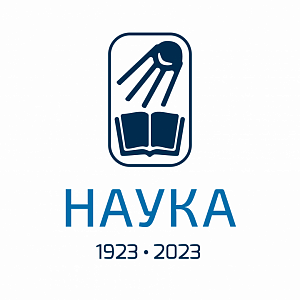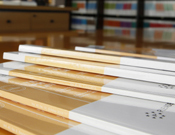Article
Thermophysical Properties of Materials
2019. V. 57. № 5. P. 641–647
Lazarev S.I., Golovin Yu.M., Kovalev S.V., Lazarev D.S.
Effect of temperature on the conformation changes of structural and thermophysical characteristics in composite cellulose-acetate films
Annotation
The effect of temperature on the conformation changes of the structural and the thermophysical characteristics in the UAM-50, UAM-100, and MGA-95 composite films of cellulose acetate are studied. An interphase layer appears at the phase interface in the UAM-50 and the UAM-100 samples according to the data of differential scanning calorimetry. An exothermic effect appears in the calorimetry data curves for water-saturated samples in the temperature range of $\Delta T = 125$–$226^{\circ}$C with $\Delta H = 20.7$ kJ/kg for the UAM-50 and $27.95$ kJ/kg for the UAM-100; this indicates hydration of the polar groups of cellulose acetate and polyamide in the interphase layer of the composite films. When composite films in the air-dried and the water saturated samples were studied with differential scanning, there was a redistribution of the ratio between the quantities of perfect crystalline structures in crystallites with different melting enthalpies. The melting enthalpy decreases from $6.06$ to $0.99$ kJ/kg for the MGA-95 low-temperature phase, from $1.99$ to $1.72$ kJ/kg for the high-temperature phase; from $3.04$ to $1.38$ kJ/kg for the UAM-50 low-temperature phase, from $8.12$ to $1.76$ kJ/kg for the high-temperature phase; from 4.99 to 1.5 kJ/kg for the UAM-100 low-temperature phase, and from $2.33$ to $0.77$ kJ/kg for the high-temperature phase. The total melting enthalpy of the endothermic peaks also decreases for all three samples; this is an indication of decreased crystallinity in the water saturated samples of the composite films.
Article reference:
Lazarev S.I., Golovin Yu.M., Kovalev S.V., Lazarev D.S. Effect of temperature on the conformation changes of structural and thermophysical characteristics in composite cellulose-acetate films, High Temp., 2019. V. 57. № 5. P. 641
Lazarev S.I., Golovin Yu.M., Kovalev S.V., Lazarev D.S. Effect of temperature on the conformation changes of structural and thermophysical characteristics in composite cellulose-acetate films, High Temp., 2019. V. 57. № 5. P. 641







